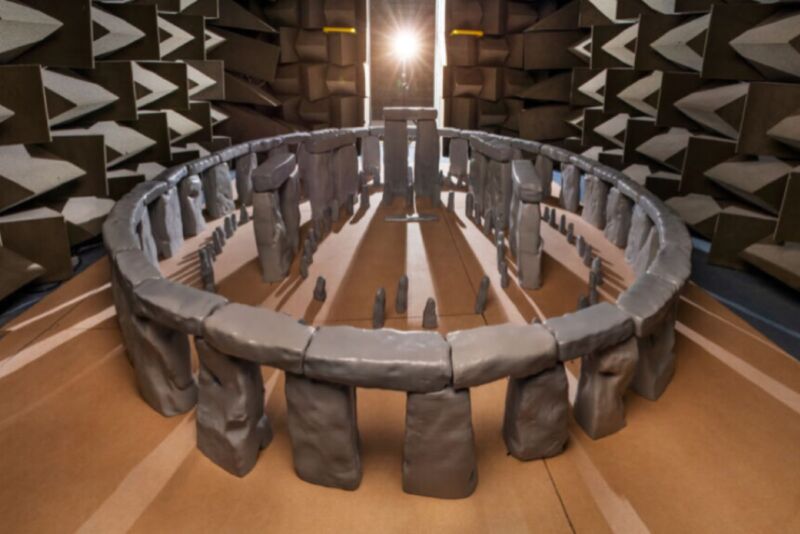“Stonehenge Lego” scale model reveals the pagan monument’s unique soundscape

Enlarge / Acoustic research using a scale model 1/12th the size of Stonehenge finds that the completed monument would have magnified speech and improved musical sounds, but only for those inside the stone circle. (credit: Acoustics Research Centre/University of Salford )
Scientists built a scale model of Stonehenge, the famous megalithic structure of stones in Wiltshire, England, and used it to recreate how sound would have been reflected off the surfaces of the stones. They found that the arrangement of the stones likely would have amplified speech and enhanced music but only if one was within the circle, according to a recent study in the Journal of Archaeological Science.
Dubbed "Stonehenge Lego," the scale model is the work of acoustical engineer Trevor Cox of the University of Salford in England and several colleagues. (Fun fact: way back in 2007/2008, Cox conducted a yearlong study to identify the top 10 worst sounds. The sound of someone vomiting topped the list, followed by microphone feedback, wailing babies, and a train scraping along the track rails.) This latest paper builds on their preliminary findings last year. They've since been working on testing the acoustics of different configurations of the stones that would have existed at different times in the monument's long history.
Recreating historical "soundscapes" is part of a relatively young field known as acoustic archaeology (or archaeoacoustics). For instance, researchers have sought to understand how acoustics may have influenced the outcome of key Civil War battles, like the Battle of Seven Pines on May 31, 1862. Another effect of interest to acoustic archaeologists is the chirping sound-reminiscent of the call of the quetzal, a brightly colored exotic bird native to the region-when you clap your hands at the bottom of one of the massive staircases of the Mayan Temple of Kukulkan at Chichen Itza in central Mexico.
Read 13 remaining paragraphs | Comments